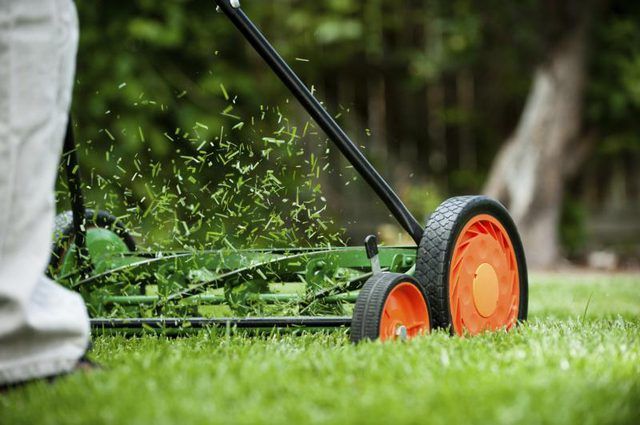Bulbs
Flower Basics
Flower Beds & Specialty Gardens
Flower Garden
Garden Furniture
Garden Gnomes
Garden Seeds
Garden Sheds
Garden Statues
Garden Tools & Supplies
Gardening Basics
Green & Organic
Groundcovers & Vines
Growing Annuals
Growing Basil
Growing Beans
Growing Berries
Growing Blueberries
Growing Cactus
Growing Corn
Growing Cotton
Growing Edibles
Growing Flowers
Growing Garlic
Growing Grapes
Growing Grass
Growing Herbs
Growing Jasmine
Growing Mint
Growing Mushrooms
Orchids
Growing Peanuts
Growing Perennials
Growing Plants
Growing Rosemary
Growing Roses
Growing Strawberries
Growing Sunflowers
Growing Thyme
Growing Tomatoes
Growing Tulips
Growing Vegetables
Herb Basics
Herb Garden
Indoor Growing
Landscaping Basics
Landscaping Patios
Landscaping Plants
Landscaping Shrubs
Landscaping Trees
Landscaping Walks & Pathways
Lawn Basics
Lawn Maintenance
Lawn Mowers
Lawn Ornaments
Lawn Planting
Lawn Tools
Outdoor Growing
Overall Landscape Planning
Pests, Weeds & Problems
Plant Basics
Rock Garden
Rose Garden
Shrubs
Soil
Specialty Gardens
Trees
Vegetable Garden
Yard Maintenance
Bermudagrass Vs. Crabgrass
Bermudagrass Vs. Crabgrass. Bermudagrass (Cynodon spp.) and crabgrass (Digitaria spp.) are both fast growers that will bully and overwhelm other plants if left to spread unchecked. In some parts of the U.S., bermudagrass can be made to behave itself to produce a thick, attractive turf if it's maintained correctly. Crabgrass, though never desirable...

Bermudagrass (Cynodon spp.) and crabgrass (Digitaria spp.) are both fast growers that will bully and overwhelm other plants if left to spread unchecked. In some parts of the U.S., bermudagrass can be made to behave itself to produce a thick, attractive turf if it's maintained correctly. Crabgrass, though never desirable as turf, is not especially difficult to control.
Uses in the Landscape
Bermudagrass is a warm-season grass that's hardy in U.S. Department of Agriculture plant hardiness zones 7 to 10. It's commonly used as a turf grass in the southern United States, and it's also sometimes grown in pastures as forage for livestock.
The two species of crabgrass common in the U.S. (Digitaria sanguinalis and Digitaria ischaemum), however, are annuals with no redeeming landscape or commercial uses. They spread readily and invade turf grass, flower beds, residential gardens and farm fields, crowding out desirable plants.
Appearance and Growth Habit
Bermudagrass is a low-growing plant that spreads via stolons that grow above ground and rhizomes that grow underground; it grows quickly and will fill in bare spots in turf with little encouragement. As a turf grass, it has a medium texture and smooth leaves with fine hairs at the base. During the peak of the growing season its leaves are dark green, but they will turn brown after a frost.
Crabgrass is also low-growing, but it spreads when nodes on its stems take root where they rest on the surface of the soil; it can also spread with the dispersal of its numerous seeds. Mature plants have smooth, dark green leaves up to 5 inches long, and plants tend to grow together to form large, dense clumps.
Aggressiveness and Invasiveness
Both crabgrass and bermudagrass have aggressive growth habits and both can be a problem in the landscape. Crabgrass thrives even in harsh conditions, so it can spread even when other plants struggle. However, its seeds need light to germinate, so it may have trouble getting established in dense turf or densely planted beds.
Because of its spreading habit, bermudagrass can also be invasive, and it will spread from the lawn into beds and paved areas if it's not controlled with edging. When bermudagrass gets into places where it's not wanted, especially in turf that consists of other grasses and in garden beds, it's difficult to eradicate, so it needs to be managed carefully when it's used as a turf grass.
Controlling Crabgrass in Bermudagrass Turf
If you maintain bermudagrass turf properly, the turf grass will be able to effectively compete with crabgrass, and the crabgrass will have a hard time getting a foothold. Mowing the turf to the proper height will prevent crabgrass seeds from germinating; bermudagrass turf hybrids such as "Santa Ana" and "Tifway II" should be maintained at a height of 1/2 to 3/4 inches, and "Tifgreen" should be mowed to between 1/4 and 1/2 inch. Bermudagrass will be most able to fend off crabgrass when it gets at least six hours of sun per day, so it is more vulnerable in shady spots.